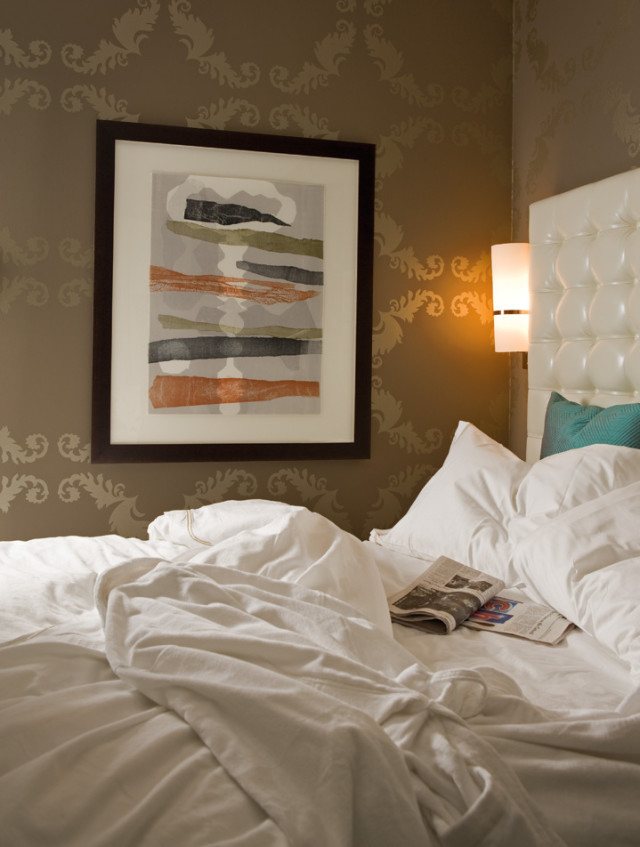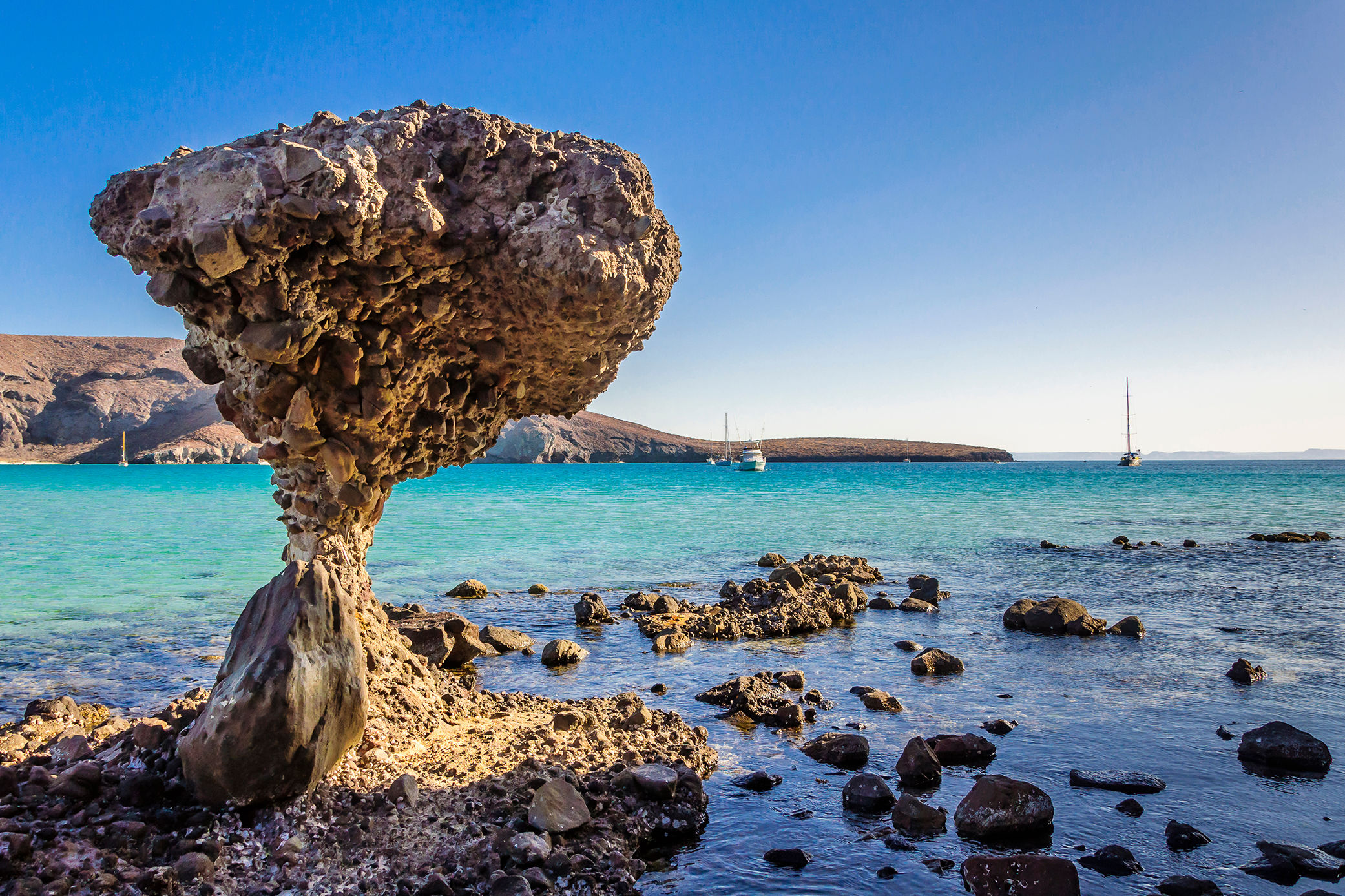The Nines Becomes an Unlikely Showcase for Portland's Creative Class

When Sage Hospitality, a Denver-based development company, unveiled a new luxury hotel on the site of Portland’s storied Meier & Frank building in October, they left no bedazzling detail unpolished: Murano glass from the Venetian Lagoon islands was flown in to outfit frosted ivory chandeliers; Italian marble was chosen to line the counters of guest bathrooms. Beautiful perks, no doubt, but this being a city that likes its luxury items best when they’re plucked from right down the street, the Nines’ quest for our city’s acceptance meant keeping the vibe local. With a 425-piece selection of museum-worthy pieces from stars of the Northwest art scene scattered throughout all nine floors of the hotel, Sage has succeeded in crafting a short-stay palace that is unapologetically posh yet undeniably Portland.
To shape their vision, the owners hired art curator Paige Powell, whose résumé includes work with legends Jean-Michel Basquiat and Andy Warhol. Using the Nines’ locale atop a nationally recognized historic landmark—located at the corner of SW Morrison Street and Fifth Avenue, the building is now home to Macy’s—Powell has managed to pay homage to Meier & Frank’s legacy while also placing one well-heeled foot in the twenty-first century.
Powell spent two years commissioning original pieces from forty-seven Portland artists, including Storm Tharp and Gus Van Sant (whose personal photographs of Ken Kesey and Mount Hood hang in the eighth-floor library), to create a mood that would transport hotel guests to bygone eras. She calls it “modern nostalgia.” The results range from LED light sculptures to large-scale installations like the main stairwell’s thirty-five-foot chandelier, shaped like the sound waves of endangered bird songs. Each of the Nines’ 331 rooms is adorned with one-of-kind silk screens, most of which were created by Pacific Northwest College of Art master printers. Powell says she appraises the collection at over $1 million.
“It was essential to keep the level of art high rather than succumbing to cuteness,” Powell says. She eyes a pair of sharp, three-foot-tall black stilettos carved by Tharp that are tossed haphazardly in the reception area. It looks like a giant femme fatale has kicked them off in a snit. Around the corner, metallic sculptural dresses in red, silver, and gold stand behind glass in recesses in the wall. Most of the dresses are made from recycled doors.
Powell’s whimsical union of new and old confronts lodgers even in typically impersonal spaces like the elevator. As chrome doors slide open at the eighth-floor reception area, a larger-than-life charcoal portrait of Clark Gable—the Portland tie salesman turned classic film icon—gazes wistfully into the distance. “The idea that Clark Gable was a tie salesman is interesting because it establishes the basis of a narrative,” Tharp says of his drawing. “We know what he became, but it’s curious to know what he was.” The mournful gray tones of the picture bleed like watercolor, framed on either side by the downtown skyline looming beyond the building’s hundred-year-old windows.
Despite the abundance of art inside the Nines, much of it is easy to miss thanks to Powell’s approach, which holds that the collection be integrated seamlessly into the setting. “The key was to have the art become part of the environment,” she says. “People can enjoy it when they’re staying in the guest rooms, or having dinner, or even walking down the stairwell.” Standing on a deck in the fourteenth-floor VIP club lounge, she demonstrates just how complete this integration is. Nearly 110 feet below us is a hand-chiseled walnut partition that divides the restaurant seating from the rest of the atrium; the only way to glimpse the inlaid tear-shaped chunks of crystal riding along the top of Ivan McLean’s piece is to peer down at them. Even a communal dining table is part of what Powell refers to as “the Portland art story”—it was carved from 620-year-old reclaimed wood.
The minimalist approach is the only way to do the art justice amid the over-the-top decadence of the Nines. “One thing that annoys me is when people try to do too much,” she says. “There were opportunities to do something beautiful—just not so much.” She points to a four-panel wall display showing moving images of the Fremont Bridge: “If you watch long enough, you’ll see a car go by.” Sure enough, silhouetted by an orange sunset, one does zip past. It’s a beautiful, secret moment. One nobody else seems to notice.




